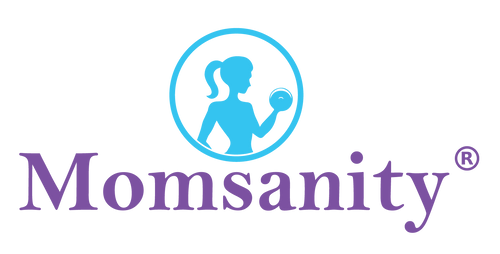Let’s talk about how important it is to exercise effectively and why we believe that aerobic exercise for women is obsolete.
These days, we all lead busy lives and have many important things to do! So it’s vital that the time we spend on our health and fitness is as effective and efficient as possible without compromising our results.
First, we need to understand that an effective exercise program should include the following:
- Fueling our bodies with quality daily nourishment by eating foods in their purest forms. This helps us have energy for our demanding schedules and build healthy lean muscles.
- Warming up with dynamic stretches for 3-5 minutes before exercising to prevent injuries and prepare the body for work.
- Staying hydrated during our workouts while sweating.
- Cooling down with 3-5 minutes of dynamic stretches to aid muscle recovery.
- Refueling and hydrating once a workout is over to get optimal results.
Now, let’s talk about why we believe that aerobic exercise is obsolete - starting with what “aerobic exercise” means.
What Is Aerobic Exercise?
Aerobic exercise is “Any form of exercise or activity that uses aerobic metabolism,” meaning oxygen is consumed heavily to provide the body with energy during physical activity. And through this process, the body becomes more efficient at delivering and using oxygen.
“That means aerobic exercise makes the heart more efficient and capable of moving more oxygen-carrying blood with every beat. The lungs adapt to be able to take in more oxygen, and the muscles become more efficient at using oxygen.” (Source: Everyday Health)

The Benefits of Aerobic Exercise
The medical community has promoted the health benefits of aerobic exercise for decades, which include:
- Improves cardiovascular conditioning
- Decreases risk of heart disease
- Lowers blood pressure
- Increases HDL or "good" cholesterol
- Helps to manage blood sugar better
- Assists in weight management and/or weight loss
- Improves lung function
- Decreases resting heart rate
Unfortunately, that’s only part of the story about aerobic exercise, and we’ll talk more about that in a minute.
How Much Aerobic Exercise Is Recommended?
The American Heart Association recommends a minimum of 150 minutes (2.5 hours) of moderate-intensity aerobic exercise 3 to 5 times per week for adults.
Why We Discourage Traditional Aerobic Exercise At Home
Here’s the rest of the story about aerobic exercise.
By its very nature, aerobic activity (like jogging, swimming, and bike riding) never reaches a high enough intensity to turn on the adrenaline response necessary to trigger EPOC (excess post-exercise oxygen consumption) and the metabolic effect. Therefore, it is an inferior fat-burning strategy.
With aerobics, you automatically pace yourself and will not breathe intensely enough to reach the anaerobic threshold needed to release growth-promoting, fat-burning hormones. Therefore, aerobic zone exercise is less beneficial than walking or high-intensity exercise because it cannot generate the same hormonal effect.
In addition, as pointed out above, our bodies become more efficient as our physical fitness level improves. So, it takes more and more aerobic exercise to achieve the same results.
What We Recommend Instead
Momsanity Sisterhood workouts provide all the benefits of traditional aerobic or cardio exercise, PLUS they burn fat and calories both during workouts and hours (and even days) after a workout. This increased energy use post-workout is referred to as excess post-exercise oxygen consumption or EPOC.
EPOC, also called oxygen debt, measures how much oxygen the body consumes in the hours and days after a workout and is the scientific name for what we call the Metabolic Effect.
The amount of oxygen consumed is correlated to how much energy is burned, but it’s hormones that determine whether the energy burned is mostly fat or sugar. Only high-intensity exercise creates the hormonal burst to create the fat-burning EPOC effect that can last up to 48 hours after a workout.
Your Momsanity coaches are certified in Metabolic Effect training. And each of our rest-based workouts focuses on four biofeedback tools we call the “Bs and Hs of an Effective Workout.” That means you can rest assured that you’re getting the correct hormonal response to turn your body into a fat-burning machine each time you do a Momsanity workout!
1. Breathless
This correlates to the release of adrenaline, noradrenaline, and Interleukin-6, which results from achieving EPOC. When you’re breathless, it means you’re working hard and unable to talk. This indicates you are hitting the anaerobic threshold, which can exponentiate the calorie burn post-workout.
2. Burning
This correlates with Lactate, Iterleukin-6, HGH, and some testosterone. You can feel the burn in your muscles. The increase of lactic acid helps release growth hormone and testosterone, which aids fat loss.
3. Heat
Getting hot and sweaty indicates the metabolic rate is rising, and enough epinephrine is released to free fat and sugar stores for energy use.
4. Heavy
This correlates with testosterone, Interleukin-15, and some HGH. By “heavy,” we mean that the weights are challenging to lift, which elicits a strong fat-burning hormonal response.
Our rest-based workouts encourage you to rest as long as you need, as often as you’d like. The more you rest, the harder you’re able to work. The more you work, the more rest becomes essential. Rest equals quality work, and quality work leads to needed rest. We often say in our workout videos, “Push until you can’t, rest until you can.”
Momsanity’s rest-based workouts are fast, effective, and continue to produce the fitness results you want because they help you achieve EPOC and the burst of hormones needed to turn your body into a fat-burning machine.
Are you ready to make a change but need help figuring out where to start? Grab our free one-month workout calendar for beginners.

